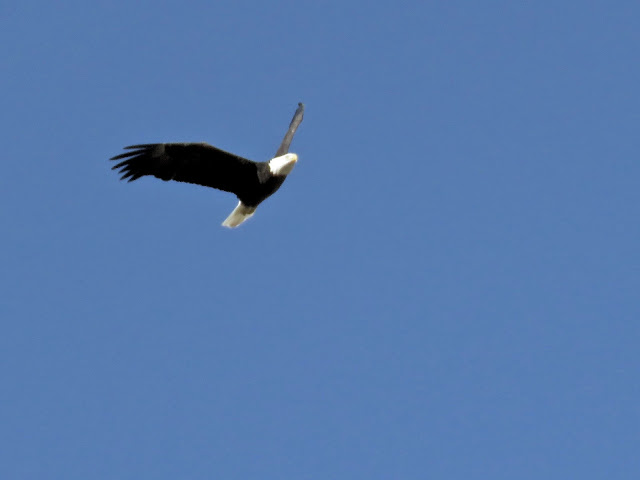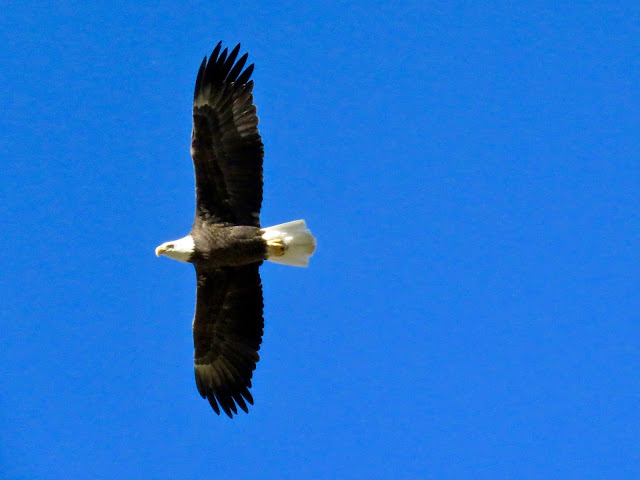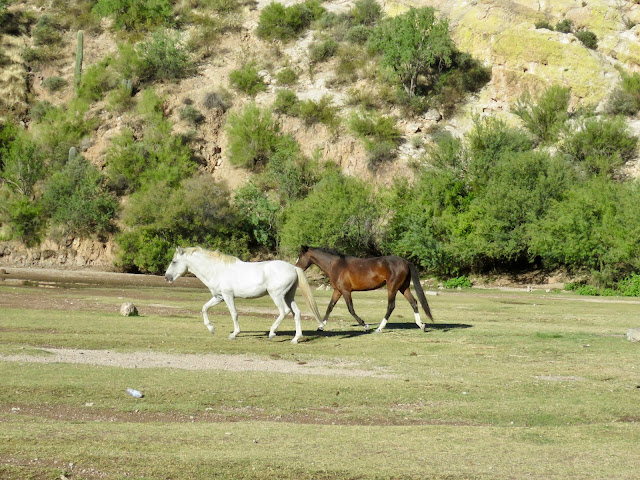Tuesday, October 3, 2017
With a dawn start to our birding Butcher Jones cove of Saguaro Lake, Kathleen was shivering and I was chilly at 62°F. What a welcome change to the oppressive heat from June through September!
Barely light, we heard birds beginning to chirp and a GILA WOODPECKER came flying through announcing its presence. Many of us in this area of Arizona have them as backyard birds - especially hogging hummingbird feeders.
Able to find a reclusive stealthy bird so early was cause for celebration. (I’m quiet; my joy, internal.) The GREEN-TAILED TOWHEE was hungry. It pecked its way beyond the cover of its bush and showed its colors. Too dark for photos, I’m posting one I took a few years ago.
 |
| GREEN-TAILED TOWHEE |
Walking the perimeter of the parking lot and beyond, we managed to spot two warblers: BLACK-THROATED GRAY and ORANGE-CROWNED.
Another back-yard bird, CURVE-BILLED THRASHER was doing its usual early “wheet wheet” call. Later, it perched on top of a saguaro to give melody to our morning.
PHAINOPEPLA, having returned from their summer homes north of the desert, were out in force. A handsome bird, the strange name derived from Greek means “shining robe”. While common where it is found, it’s not found everywhere in the desert. But anywhere there is lots of mistletoe in the trees, you’ll find them.
The PHAINOPEPLA, a flycatcher, is often found perched out in the open. Both male and female have a thin crest and non-birders often report seeing "black Cardinals". We counted a conservative number of 35 during our almost three hours there. The female wears softly muted gray feathers.
 |
| Male PHAINOPEPLA [fane-o-pep-la] |
 |
| Female PHAINOPEPLA [note red eyes for both sexes] |
Many of our sightings were located closer to the beach and marsh.
Out on the water, we spotted three (3) DOUBLE-CRESTED CORMORANT and a couple hundred short, hefty white-billed black AMERICAN COOT(s).
A GREAT BLUE HERON stood partially hidden in the reeds, its eyes on the water.
A few sparrows flew into the base of the reeds at the mudflats. We had walked very slowly to a place about fifteen feet from there. A RUFOUS-CROWNED SPARROW, with its striking dark throat stripe edging its white malar, ran up the hill when it spied us. CHIPPING and BREWER’S sparrows weren't as spooked.
 |
| BREWER'S SPARROW |
 |
| BREWER'S SPARROW [note who is photo-bombing this pic] |
More often heard than seen, two SORA considered us no threat as they methodically pursued invertebrates, seeds and/or insects in the mud. They are among the variety of "rail" that inhabit our marshes and is small and compact. Looking very much like a chicken, the beak and legs are yellow; the tail short and often cocked upward. The paler of the two appears to be a juvenile.
 |
| The black-faced SORA is an adult |
In the midst of our SORA observations, a frenzy of activity out on the water caught our attention. Kathleen, immediately inquisitive, wanted to know what was going on. I couldn't see the threat but I suggested she look for a raptor.
"Yes!" she reported. Just then, a very low-flying BALD EAGLE flew over.
 |
| BALD EAGLE |
The American Coots that had covered the width of the cove, had run noisily across the water in their defensive strategy. By closing the gap between themselves as they foraged on the surface, the Coots converged into three very tight groups of "black" so that no one duck was an easy target.
The first eagle was joined by two other mature eagles that continued to circle over the cove before heading out to the larger lake.
To top off our great day, a small band of wild horses came through the mesquite bosque of the picnic area to water's edge.
* * *
Click on the link below to view all the birds we saw.
View this checklist online at http://ebird.org/ebird/view/checklist/S39535503









No comments:
Post a Comment